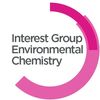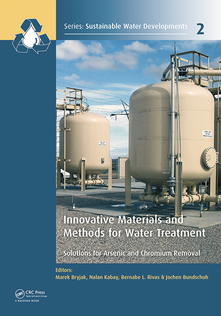Innovative Materials and Methods for Water Treatment Solutions for Arsenic and Chromium Removal
The widespread presence of many arsenic (As) and chromium (Cr) species in the environment, and the need to ensure acceptably low concentrations of both elements in water underlines the importance of this book.
The multiple oxidation states exhibited by both As and Cr in the aquatic environment make for complex toxicological problems and pose significant challenges in effectively and efficiently reducing them to safe levels. This text provides a summary of the underlying chemistry and both current and future technologies that may be employed for the attenuation of their environmental impacts.
The multiple oxidation states exhibited by both As and Cr in the aquatic environment make for complex toxicological problems and pose significant challenges in effectively and efficiently reducing them to safe levels. This text provides a summary of the underlying chemistry and both current and future technologies that may be employed for the attenuation of their environmental impacts.
|
In this compilation, the book’s four editors merged the efforts of over 50 contributors. Inevitably, this leads to a mixture of writing styles and emphases between chapters and, as a consequence, the book suffers from a lack of overall coherence. Some chapters have a narrow focus; others are more widely relevant.
In part 1, the book introduces the problem of As and Cr contamination and associated human health issues. Chapter 1 discusses the background solution chemistry of both elements extensively, whilst Chapter 2 contains a rather laboured account of the geochemical and human issues surrounding the problem of trace As contamination in groundwater; Chapter 3 explains the structural effects on red blood cells induced by Cr(III) and Cr(VI); and Chapter 4 includes generic description of the design, development and commissioning stages of an operational plant, and a detailed explanation of the authors’ views and experiences of the implementation of these technologies. However, those requiring specific information would need to look elsewhere. |
Part 2 reviews innovative materials available for the removal of As and Cr. Chapters discuss metal-based inorganic adsorbents, nanoparticles, metal oxide-doped natural materials, polymeric sorbents, solvent-impregnated resins, ion exchange sorption processes, and water-soluble polymers used in conjunction with membranes. Chapter 12 is devoted to the use of low-cost absorbents for As and Cr removal (e.g. fly ash, steel-making slag, red mud, assorted sludges, carbon slurry, and agricultural byproducts), and also contains a detailed description of the various sorption removal mechanisms.
Part 3 describes a number of innovative As and Cr removal techniques (e.g. solar-assisted advanced oxidation) and particular applications (e.g. As removal from groundwater and wastewaters from geothermal plants). Interestingly, in Chapter 20, the authors discuss combinations of different membrane systems or membranes coupled with more conventional removal methods, whilst in Chapter 21, concentration and electromotive-driven processes such as dialysis and electrodialysis are considered.
The final part presents case studies describing As removal from drinking water and mining effluents in Latin American countries, and As and Cr removal technologies for drinking waters in the USA.
Overall, the book would have benefited from a more thorough proofreading to correct several minor grammatical and textual errors, and more radical editing to provide a clearer narrative arc for the curious, but not over-specialist, reader. My lasting impression is that this is a book best dipped into rather than a gripping read enjoyed from cover to cover.
References
Innovative Materials and Methods for Water Treatment Solutions for Arsenic and Chromium Removal, Editors: M.Bryjak, N. Kabay, B.L. Rivas & J. Bundschuh
Part 3 describes a number of innovative As and Cr removal techniques (e.g. solar-assisted advanced oxidation) and particular applications (e.g. As removal from groundwater and wastewaters from geothermal plants). Interestingly, in Chapter 20, the authors discuss combinations of different membrane systems or membranes coupled with more conventional removal methods, whilst in Chapter 21, concentration and electromotive-driven processes such as dialysis and electrodialysis are considered.
The final part presents case studies describing As removal from drinking water and mining effluents in Latin American countries, and As and Cr removal technologies for drinking waters in the USA.
Overall, the book would have benefited from a more thorough proofreading to correct several minor grammatical and textual errors, and more radical editing to provide a clearer narrative arc for the curious, but not over-specialist, reader. My lasting impression is that this is a book best dipped into rather than a gripping read enjoyed from cover to cover.
References
Innovative Materials and Methods for Water Treatment Solutions for Arsenic and Chromium Removal, Editors: M.Bryjak, N. Kabay, B.L. Rivas & J. Bundschuh


